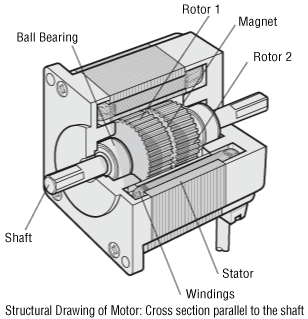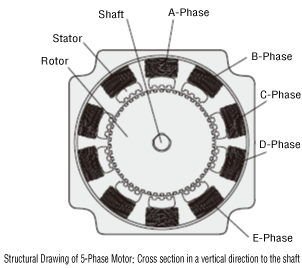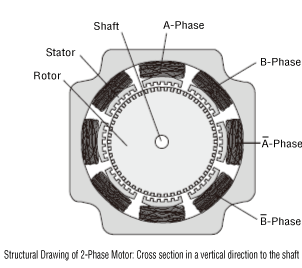αSTEP/Stepper Motor: Stepper Motor Structure
A cross section of a stepper motor is shown in the figure below.
Broadly speaking, a stepper motor is composed of 2 parts: the stator and the rotor.
The rotor consists of 3 parts: rotor 1, rotor 2, and a permanent magnet. Additionally, the rotor is magnetized in the axial direction, with Rotor 1 being the North pole and Rotor 2 being the South pole.

The stator has magnetic poles with small teeth, each wound with its own winding.
The winding is connected to opposing magnetic poles, and it is wound in such a way that when current flows, it magnetizes to the same polarity. (This means that by passing current through a certain winding, the opposing magnetic poles are magnetized with the same polarity, either North pole or South pole.)
It forms one phase with two opposing magnetic poles. The type with 5 phases from phase A to phase E is called a 5-phase stepper motor, while the type with 2 phases, phase A and phase B, is called a 2-phase stepper motor.
The outer periphery of the rotor has 50 small teeth, and the small teeth of Rotor 1 and Rotor 2 are mechanically offset by half a pitch.
- Excitation
- The state when current flows through the motor winding
- Magnetic Pole
- The protruding parts of the stator that become electromagnets via excitation
- Small Teeth
- The teeth of the rotor and stator

